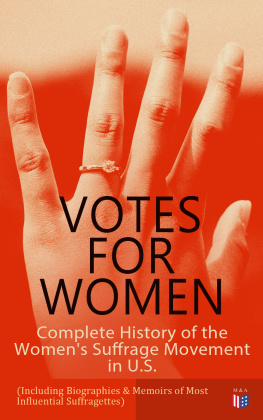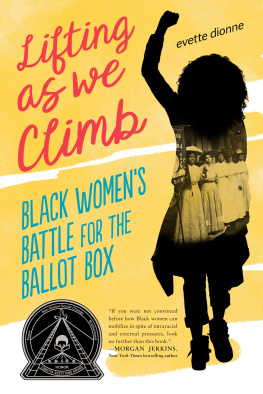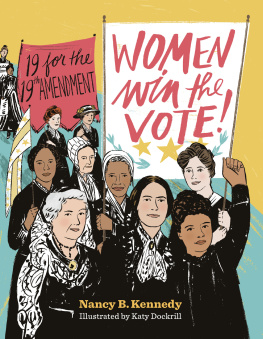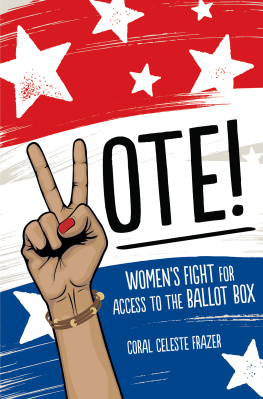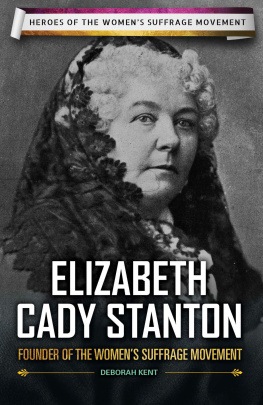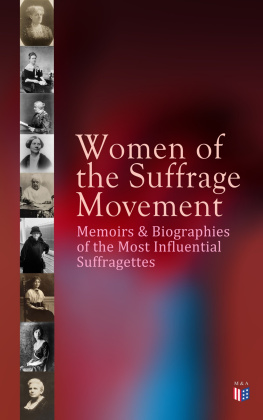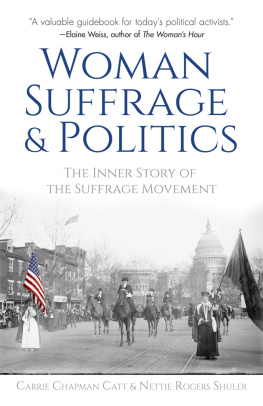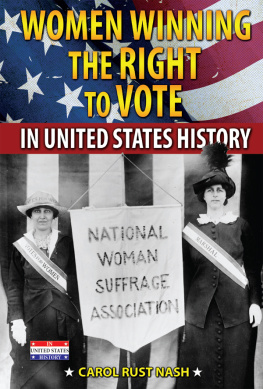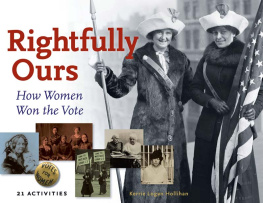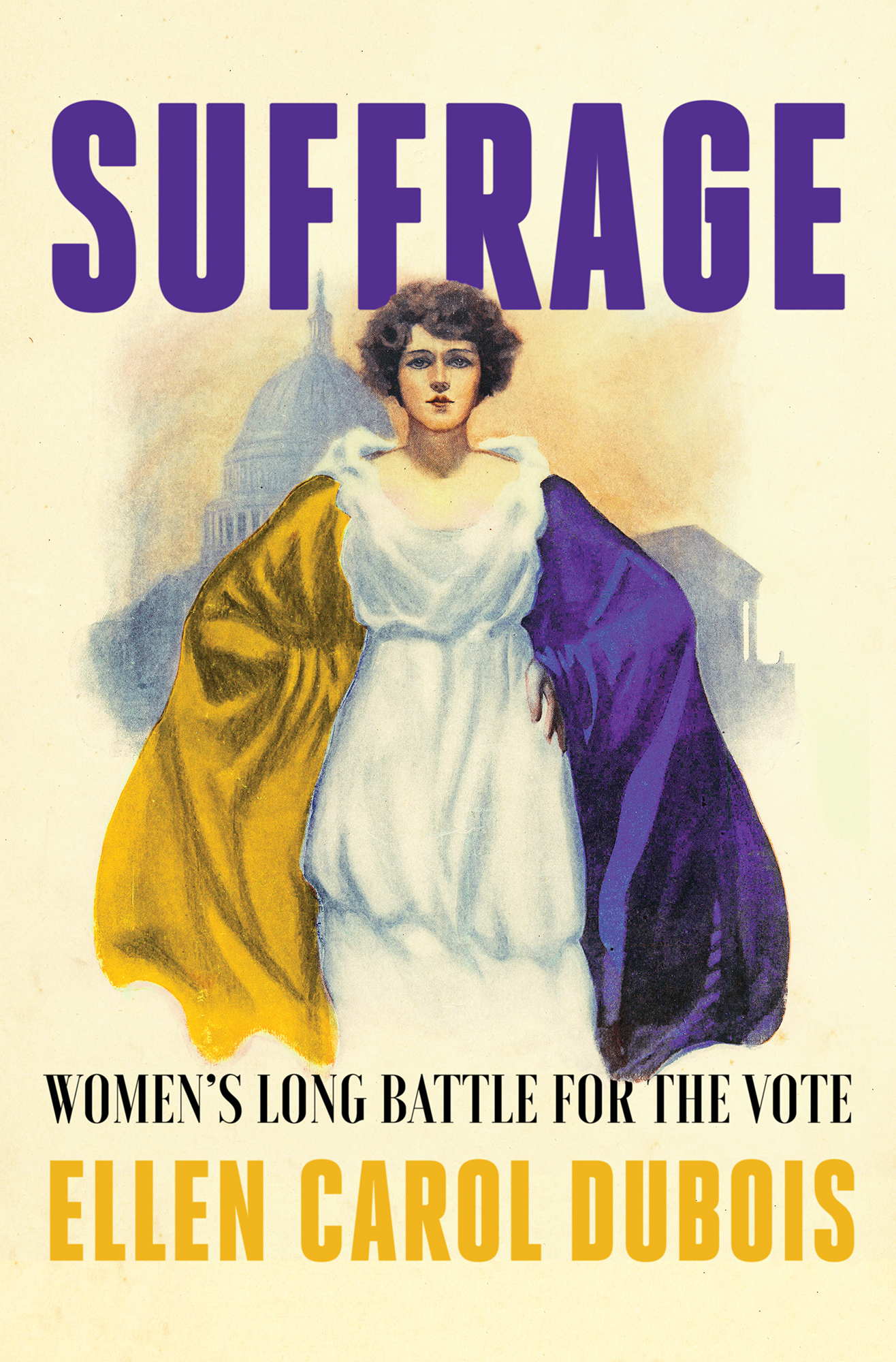Contents
Guide
ALSO BY ELLEN CAROL DUBOIS
Elizabeth Cady Stanton:
Feminist as Intellectual
(Coeditor with Richard Candida Smith)
Through Womens Eyes:
An American History with Documents
(with Lynn Dumenil)
Harriot Stanton Blatch and the Winning of Woman Suffrage
Woman Suffrage and Womens Rights: Essays
Feminism and Suffrage:
The Emergence of an Independent
Womens Movement in America
18481869
The Elizabeth Cady StantonSusan B. Anthony Reader:
Correspondence, Writings, Speeches
(Editor)
Unequal Sisters:
An Inclusive Reader in U.S. Womens History
(Editor, with Vicki L. Ruiz)

Simon & Schuster
1230 Avenue of the Americas
New York, NY 10020
www.SimonandSchuster.com
Copyright 2020 by Ellen Carol DuBois
All rights reserved, including the right to reproduce this book or portions thereof in any form whatsoever. For information address Simon & Schuster Subsidiary Rights Department, 1230 Avenue of the Americas, New York, NY 10020.
First Simon & Schuster hardcover edition February 2020
SIMON & SCHUSTER and colophon are registered trademarks of Simon & Schuster, Inc.
For information about special discounts for bulk purchases, please contact Simon & Schuster Special Sales at 1-866-506-1949 or .
The Simon & Schuster Speakers Bureau can bring authors to your live event. For more information or to book an event contact the Simon & Schuster Speakers Bureau at 1-866-248-3049 or visit our website at www.simonspeakers.com.
Interior design by Lewelin Polanco
Jacket design by Alison Forner
Jacket art by Gado Images/Alamy Stock Photo
Library of Congress Cataloging-in-Publication Data is available.
ISBN 978-1-5011-6516-0
ISBN 978-1-5011-6517-7 (ebook)
To Arnie for the future, and to my mother for the past
Introduction
A seventy-five-year marathon through the very core of American history, the suffrage movement brought half the American people into the body politic, gave them fundamental political rights, and recognized their existence as individuals above and beyond immersion in family roles. It opened the road women would need to travel to gain genuine political power. It ushered in a pair of fundamental changes: dramatic alterations in what it meant to be an American woman, and a grand step forward toward true democracy, the largest mass enfranchisement in national history. The Nineteenth Amendment to the Constitution barring disfranchisement on account of sex was ratified in 1920, but even after that victory, the full meaning of womens enfranchisement continued to evolve.
The demand for woman suffrage meant one thing when its mid-nineteenth-century aspirants imagined full voting rights for women. It meant quite another when tens of thousands of American women mobilized for the amendment in the early twentieth century as the country entered the modern era and stepped onto the global stage. The significance of woman suffrage continues to change today, as hopes and fears for American democracy rise and fall. Its meaning alters as American women become ever more assertive in public life, and the issues that concern them, notably the right to abortion, move to the center of national politics. Its legacy grows as womens votes are solicited by political parties, even as female candidates encounter enduring misogynist taunts and sexist prejudices. Its consequences change as some women candidates for political office experience unexpected, crushing defeats, even as others win surprising victories.
This book was first conceived to coincide with the hundredth anniversary of the ratification of the Nineteenth Amendment. But it was also written and completed when American democracy wasas it has been in the pastin great upheaval, perhaps even peril. When I began this book, I was hopefulactually certainthat it would coincide with the first female presidency. As I wrote, that hope was dashed by a radically different presidency, one awash in misogyny, racism, and nativism. Nothing could illustrate more starkly the unpredictable path of women in American politics than the unanticipated defeat of a female presidential candidate widely expected to take the highest office, followed by unprecedented numbers of enraged women taking to the streets in the largest political demonstration in American history, and two years later by the election to Congress of a virtual flood of women candidates new to electoral politics and extremely diverse in their backgrounds and experiences.
The woman suffrage movement had incredible range. It was sustained and transformed through massive political, social, and economic changes in American life and carried forward by at least three generations of American women. The women who first raised the call for their political rights did so with limited educational and occupational opportunities, but also with memories of the American Revolution still fresh and hopes for their young nation great. They would be forgiven if they could not recognize themselves in the women who finished the struggle: New Women, as they called themselves, with college educations and aspirations for economic independence, visions of companionate marriage and sexual freedom, insisting that they be fully empowered citizens.
The suffrage movement was shaped byand shapedthe different political eras through which it grew. First expressed in the 1840s, when abolition, temperance, and other social movements were riling politics, suffrage hopes initially peaked in Reconstruction years. Subsequent decades witnessed massive social and political reaction to the dramatic changes which the nation had undergone, and the suffrage movement was set back by the Jim Crow racism and untrammeled capitalism of those very conservative years.
Toward the end of the nineteenth century, democratic politics revived, and with it, the suffrage movement. The growing class conflict within the nations booming economy began to be challenged and the suffrage movement advanced in its wake. Great masses of wage-earning women flooded into suffragism in its last decades. So too did a new, twentieth-century determination to use governmental resources and power to address national social and economic issues. The franchise for women might not have been won when it was had it not been for the political culture of the Progressive Era.
Some of the women who were drawn to the suffrage standard during these different phases were undeniably radical; others were conventional, even conservative. All, however, were determined that women and their concerns must be allowed to shape political debates and affect political decisions. The first important lesson of the woman suffrage movement can be found here, in the incredible determination of advocatesand their daughters and their granddaughterswho refused to stop fighting for their right to vote. To appropriate a reprimand against a defiant female fighter on the national political stage: nevertheless she persisted. Generations of suffragists persisted, and their descendants reap the benefits of their stubborn heroism.
Because the woman suffrage movement was of such long duration, because it went through so many iterations, categorical claims about what suffragism wasand wasntare suspect. This book confronts two of those claims in particular. The first is that suffragism was a single issue movement, that as its advocates determined to win political equality for women, they ignored other claims for social justice.



